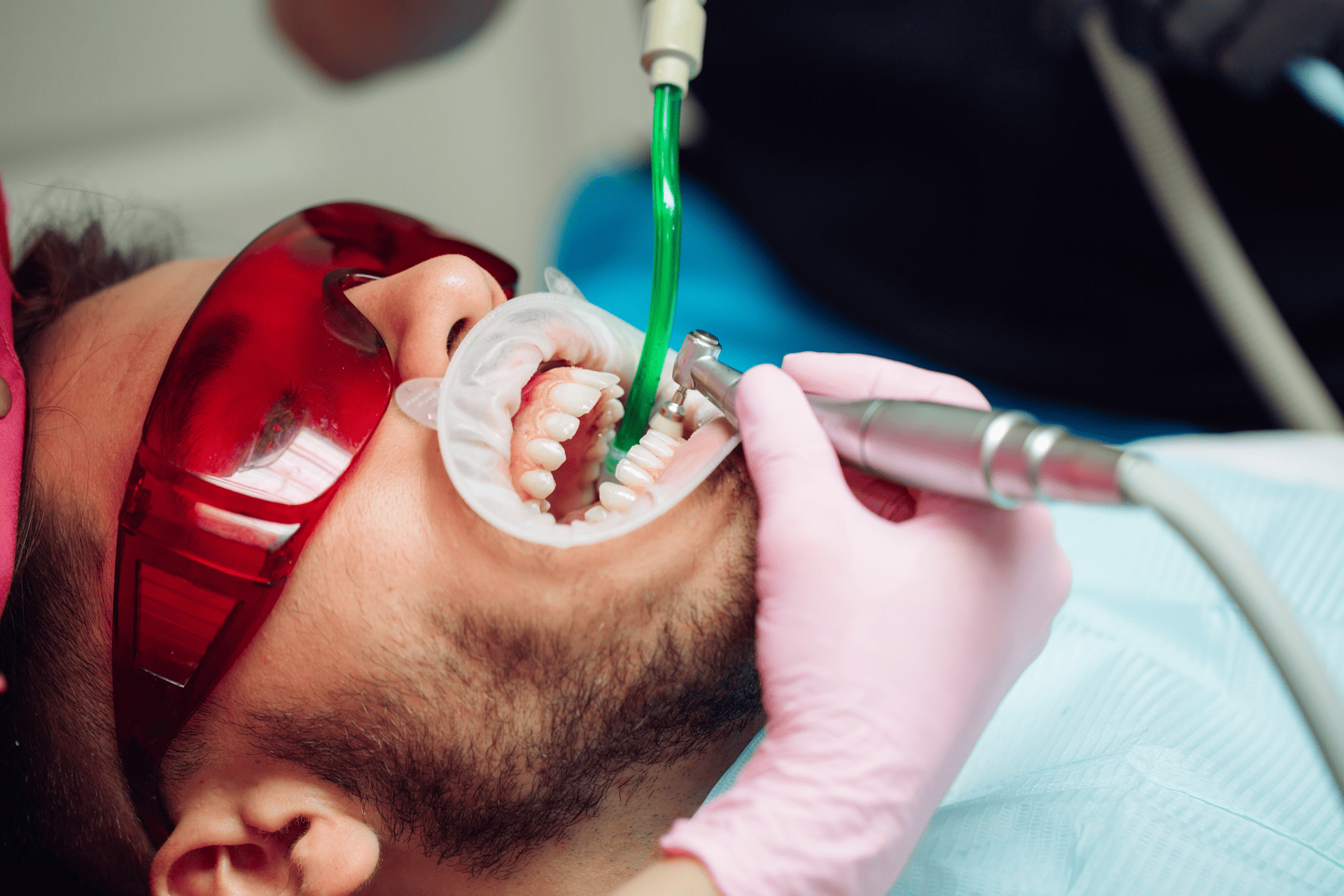What Insurance Covers Cosmetic Dentistry?

Understanding Cosmetic Dentistry Coverage
Defining Cosmetic Dentistry Procedures
Cosmetic dentistry encompasses a range of procedures aimed at improving the appearance of teeth and smiles. Cosmetic dentistry in Redlands includes services such as teeth whitening, porcelain veneers, dental bonding, and more. These procedures are often sought after for their ability to enhance aesthetic appeal rather than for medical necessity.
While some cosmetic dental services can also provide restorative benefits, the primary goal is to create a visually pleasing result.
Here is a list of common cosmetic dentistry procedures:
- Teeth Whitening
- Porcelain Veneers
- Dental Bonding
- Dental Implants
- Invisalign
- Botox
- Dermal Fillers
Each of these services caters to different cosmetic needs, from correcting discoloration to aligning teeth and rejuvenating facial features. Note that while some dental insurance plans may offer limited coverage for certain cosmetic procedures, many do not cover them as they are considered elective rather than essential.
Common Misconceptions About Coverage
One misconception about dental insurance is that full coverage is immediately available for major procedures. In reality, many plans have waiting periods that delay coverage for certain services, particularly those categorized as major. For example, while preventative care might not have a waiting period, more complex treatments could be subject to delays before insurance benefits apply.
Another common misunderstanding is the extent of coverage for specific treatments. Fillings, often considered a basic service, may receive varying levels of coverage depending on the insurer.
Cosmetic procedures, such as veneers or teeth whitening redlands, are typically not included in dental insurance plans. These are seen as elective rather than medically necessary, and therefore, not covered.
When selecting a dental insurance plan, look beyond the premiums and consider customer satisfaction and the actual benefits provided. While some plans may boast low premiums and no waiting periods, they might offer poor coverage for common procedures like fillings, leading to higher out-of-pocket costs in the long run.
Evaluating Your Dental Insurance Plan
When evaluating your dental insurance plan, consider both your current and anticipated future dental needs. Assess the plan's coverage for routine procedures and major dental work, and understand the implications of coinsurance rates and waiting periods for specific services. Here's a simple guide to help you evaluate a plan:
- Check for preventive services coverage: Most plans cover preventive services like examinations, cleanings, and X-rays.
- Major procedures: Look for plans that offer reasonable coverage for major procedures, keeping in mind that there may be waiting periods.
- Orthodontic coverage: If you or your dependents might need orthodontic care, verify whether the plan includes it, especially for children.
- In-network vs. out-of-network: Understand how your costs may vary depending on whether you choose an in-network or out-of-network dentist.
Remember, the right dental insurance plan should align with your dental health status, anticipated needs, and financial situation. It's about finding the lowest premium and ensuring that the coverage meets your specific dental care requirements.
Finally, if you're obtaining insurance through an employer, compare the offered plan with other available options to ensure you're selecting the most suitable one. If you're purchasing independently, review multiple plans from different companies, considering both benefits and costs, before making a decision.
Typical Exclusions in Dental Insurance
Cosmetic Procedures Generally Not Covered
When it comes to dental insurance, cosmetic dentistry is often left out of the coverage. Procedures designed to improve the appearance of your smile, such as teeth whitening, veneers, and bonding, are typically considered non-essential and therefore not eligible for insurance benefits.
While the primary goal of dental insurance is to support oral health, cosmetic enhancements are usually seen as elective and not medically necessary.
Here is a list of common cosmetic procedures that are generally not covered by dental insurance:
- Teeth whitening
- Dental bonding
- Veneers
- Certain types of dental implants
It's important to review your dental insurance plan carefully, as coverage can vary widely. Some plans may offer limited coverage for procedures like orthodontic care or adult braces, but these are often the exception rather than the rule.
The Case of Orthodontic Care and Adult Braces
When it comes to adult braces, dental insurance coverage can be particularly complex. Orthodontic care, which includes braces and other appliances designed to align teeth and bites, is often considered separate from standard dental procedures. This distinction means that even if your dental plan covers orthodontics, the specifics can vary greatly.
Coverage for orthodontic care may have different terms compared to other dental services. For instance, some plans may cover a portion of the orthodontist's services but not the appliances themselves, such as braces or retainers.
Here's a quick overview of typical coverage scenarios for adult braces in dental insurance plans:
- Initial coverage might be as low as 10% in the first year, potentially increasing in subsequent years.
- Coverage is often limited to children under a certain age, usually 19, leaving adults with fewer options.
- Some plans offer a lifetime maximum for orthodontic care, which can be quickly exhausted by the high cost of adult braces.
Understanding these nuances is key when selecting a dental insurance plan that includes orthodontic benefits. Always review the plan details to ensure that the coverage aligns with your needs, especially if you are considering braces as an adult.
Pre-existing Conditions and Their Impact on Coverage
Pre-existing conditions can significantly affect your coverage options. Many dental insurance plans do not cover conditions that were present before the policy's effective date. This is particularly relevant for cosmetic dentistry, which often includes procedures that are not just aesthetic but also corrective in nature.
- Typical Exclusions:
- Cosmetic dentistry
- Fillings
- Implants
- Orthodontics
- Routine dental cleanings
Coverage may vary widely between policies, and certain treatments might be excluded altogether.
For instance, if you're considering orthodontic care such as braces or aligners and have a pre-existing dental condition, you may face limitations or denial of coverage. To avoid surprises, it's advisable to review your policy details or speak with your insurance provider to clarify what is and isn't covered.
Remember, insurance companies may require a waiting period before certain benefits apply, and coverage for major services like cosmetic dentistry could be subject to specific terms and conditions.
Navigating Orthodontic Benefits
Understanding Coverage for Braces and Aligners
When it comes to dental insurance, Coverage levels can vary significantly from one plan to another, and they often change over time. For instance, some plans may start with a lower coverage percentage for orthodontic care, which then increases after the first year of the policy.
While some plans include orthodontic benefits for children and teenagers, adults may find their options more limited. Always check the age eligibility for orthodontic coverage in your plan.
Remember, orthodontic coverage often comes with a lifetime maximum benefit, which can be as low as $1,000. Knowing this cap helps when planning for the cost of braces or aligners. Additionally, some plans may impose a waiting period before major services like orthodontics are covered, and others might offer immediate coverage but with a lower initial percentage.
Differences in Coverage for Orthodontist Services
When selecting a dental insurance plan, understand that coverage for orthodontist services can vary significantly. Orthodontic care, including braces and aligners, may be covered differently depending on the plan. Some plans may offer comprehensive coverage for orthodontic services, while others might limit this to children or impose a lifetime maximum benefit.
Understanding these differences is key to choosing a plan that aligns with your orthodontic needs and financial considerations.
Choosing a Plan with Orthodontic Benefits
When selecting a dental insurance plan with orthodontic benefits, understand the specifics of what is covered. Coverage can vary significantly between plans, especially regarding orthodontic services and appliances. Here are some key points to consider:
- Verify if the plan includes orthodontic coverage for both children and adults, as some plans may limit this benefit to children only.
- Check the percentage of coverage provided for orthodontic procedures and whether it increases over time.
- Look into the lifetime maximum benefit for orthodontic services, which can impact the overall cost you'll incur.
Remember, the details in the fine print can make a significant difference in your benefits and out-of-pocket expenses.
Additionally, it's worth comparing the annual maximum payouts and whether there are any waiting periods for orthodontic services. Plans like the Personal Dental Plan Comprehensive with Ortho 2000 or Ortho 1500 in Georgia offer higher maximums and reduced waiting periods, which can be advantageous. However, always weigh the pros and cons, such as network size and state availability, to ensure the plan meets your specific needs.
The Financial Aspect of Dental Insurance
Analyzing Annual Maximum Payouts
Dental insurance plans often set an annual maximum payout, which is the highest amount the insurer will pay for your dental care within a given year. Once you reach this limit, you'll be responsible for any additional costs. Know how these caps can affect your dental care, especially for more expensive cosmetic procedures.
Annual maximums are a critical factor in dental insurance as they dictate the extent of coverage you can receive in a year. Exceeding this limit means paying out-of-pocket for any further treatments.
Remember, insurance benefits renew annually and cannot be carried over, so plan your dental procedures accordingly to maximize the use of your benefits within the coverage year.
Coinsurance and Waiting Periods for Major Services
When considering dental insurance for major services, it's crucial to understand the terms of coinsurance and waiting periods. Coinsurance is the percentage of the cost of a service that you're responsible for paying after meeting your deductible. For major dental services, this can be a significant portion of the overall expense.
Waiting periods are equally important to consider. Many dental insurance plans impose waiting periods before full coverage is in effect for major procedures. This means that you may need to wait a certain amount of time after purchasing your plan before you can utilize benefits for major dental work.
Here's a quick overview of typical waiting periods for major services:
- Basic care: 3 months
- Major care: 6 to 12 months
Weigh the value of a plan against its waiting period. For instance, Physicians Mutual may offer a better value if you can endure the 12-month waiting period for major care, while other plans like Anthem might be more suitable for those who require immediate coverage.
Remember, some plans may offer immediate coverage for basic care, but it's the major procedures that often come with longer waiting periods. Always review the specifics of your plan to avoid unexpected costs and ensure that you're fully covered when you need it.
Pros and Cons of Specific Dental Insurance Plans
When evaluating dental insurance plans, weigh their advantages and disadvantages. Pros of certain plans include attractive features like a $100 lifetime deductible, which is beneficial for long-term policyholders, and comprehensive coverage for preventive care without a waiting period. Additionally, some plans offer high annual maximum payouts, such as $2,000, with the option to carry over unused funds.
Cons often involve limitations such as a small network of providers, state availability, and a poor cost-to-value ratio. Long waiting periods for major services, like the 18-month duration seen in some plans, can also be a significant drawback. Moreover, while some plans offer generous coverage for basic and major care, they may still impose a 50% coinsurance rate, which requires careful financial consideration.
Analyze both the immediate and long-term financial implications of a dental insurance plan. Consider the balance between premiums, coverage levels, and out-of-pocket costs to ensure the plan aligns with your dental care needs and budget.
Read the fine print and understand the specific terms and conditions of each plan, as they can significantly impact your coverage and out-of-pocket expenses.
Selecting the Right Dental Insurance Plan
Coverage for Preventive and Basic Care
When selecting a dental insurance plan, understanding the coverage for preventive and basic care is crucial. Preventive care typically includes routine examinations and cleanings, and is often covered at 100% without a waiting period. This immediate coverage is designed to maintain oral health and prevent the development of dental issues.
Basic care, on the other hand, involves restorative work such as fillings to repair damage. While preventive services aim to stop potential problems, basic services address existing issues. Coverage for basic care varies and may involve cost-sharing, where the insurance covers a percentage of the service cost.
Note that the percentage of coverage for basic services can differ significantly between plans, affecting out-of-pocket expenses.
Remember to compare these coverage levels with the plan's monthly premium and deductible to make an informed decision.
Comparing Plans for Cosmetic and Orthodontic Procedures
When selecting a dental insurance plan, compare how different plans cover cosmetic and orthodontic procedures. Understanding the nuances of coverage can save you from unexpected expenses.
- Anything cosmetic, such as teeth whitening and veneers, is often excluded from dental insurance plans.
- Orthodontic appliances like braces and aligners may have varying levels of coverage, with some plans offering no orthodontic benefits at all.
Be sure to scrutinize the details of any plan you're considering, especially regarding orthodontic care. Coverage for the orthodontist's services might differ from that for the actual appliances.
Remember, while some plans offer immediate coverage for basic or major care, others might impose waiting periods. Always compare the annual maximum payouts, coinsurance rates, and the extent of coverage for both preventive and major services before making a decision.
Reading the Fine Print: Limitations and Eligibility Requirements
When selecting a dental insurance plan, paying attention to the fine print is crucial. Exclusions, limitations, and eligibility requirements can significantly affect your coverage, especially for cosmetic procedures. Here are some key points to consider:
- Exclusions: Certain procedures may not be covered at all, such as elective cosmetic surgeries or pre-existing conditions.
- Limitations: There may be caps on how much the insurance will pay out annually or over the lifetime of the policy.
- Waiting Periods: Some services may have a waiting period before coverage kicks in, particularly for major care.
- Eligibility: Requirements such as age, medical history, or previous dental check-ups can determine your eligibility for coverage.
Understand the specific terms of your policy, including any waiting periods, cost-sharing details, and the annual maximum payout. These factors will influence your out-of-pocket expenses and the overall value of the plan.
For example, a plan might offer a high annual maximum payout with the option to carry over unused funds, but it could also have a waiting period for major services. Comparing these details across different plans will help you find the one that best suits your needs.
Frequently Asked Questions
-
Does dental insurance cover teeth whitening, implants, or braces?
Teeth whitening is generally not covered by dental insurance as it is considered a cosmetic procedure. Coverage for implants and braces varies by plan, with braces often falling under orthodontic care which may or may not be included.
-
What does dental insurance typically not cover?
Dental insurance commonly excludes cosmetic procedures, teeth whitening, pre-existing conditions such as missing teeth, and sometimes implants, orthodontic care, and adult braces. Coverage depends on the specific dental plan.
-
Are orthodontic appliances like braces and aligners covered by dental insurance?
Coverage for orthodontic appliances such as braces and aligners is not guaranteed in all dental plans. If seeking insurance with orthodontic benefits, it's crucial to understand the coverage details for both the orthodontist's services and the appliances.
-
What are the pros and cons of specific dental insurance plans?
Pros may include high annual maximum payouts for services, full coverage for preventive care without a waiting period, and partial coverage for basic care and major services like implants and orthodontics after a waiting period. Cons can include waiting periods for major services and coverage limits for procedures like teeth whitening.
-
What is usually not covered by dental insurance?
Signs of complications may include excessive pain or swelling that doesn't subside, signs of infection such as pus or fever, difficulty chewing or biting, and the implant feeling loose. Contact your dentist immediately if you notice any of these symptoms.
-
How does dental insurance work?
Dental insurance helps pay for covered care, which can include preventive cleanings, basic care like fillings, and major care like crowns and oral surgery. The specifics of what is covered vary by policy.
Hours & Address
Monday to Saturday
9:00 am to 6:00 pm
419 Brookside Ave.
Redlands, CA 92373
Navigation Links
Hours & Address
Monday to Friday 9:00 am to 6:00 pm
Some evenings (to be determined) Saturdays (to be determined)
419 Brookside Ave.
Redlands, CA 92373
Navigation Links
© 2024 All Rights Reserved | Majestic Dental





